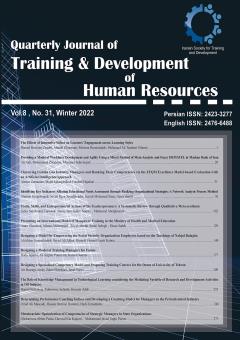Designing a Model for Empowering the Social Security Organization Employees based on the Teachings of Nahjul Balagha
Subject Areas :Ali Akbar Esmaeilzadeh 1 , Seyed Ali Akbar Ahmadi 2 , Hamed FazliKebria 3
1 - Ph. D. Student in Public Administration, Faculty of Humanities, Payame Noor University, Tehran, Iran
2 - Professor of Persian Language and Literature, Uremia University, Uremia, Iran
3 - Assistant Professor, Department of Public Administration, Payame Noor University, Tehran, Iran
Keywords: Empowerment Model, Nahj al-Balagheh teachings, Social Security Organization Employees.,
Abstract :
The aim of this study was to present a model of empowerment of employees of the Social Security Organization based on the teachings of Nahj al-Balagheh. On this basis, first, using the documentary analysis approach of Nahj al-Balaghah, Dashti translation, which includes 625 pages, 241 sermons, 79 letters ,and 480 wisdoms, was analyzed and the items that were in line with the intended themes were extracted. Then, the indices were selected from the extracted themes and the components were selected from the indices. The analysis performed in this study was inductive qualitative content analysis. The extracted themes were then presented to the experts using the Delphi technique. After Delphi approval, the model was designed. To validate the designed model, the model was developed in the form of a suitable questionnaire and the questionnaire was provided to 281 employees of the Social Security Organization of Chaharmahal and Bakhtiari province. The results were analyzed based on the structural equation model. Therefore, according to factor analysis, 8 factors and 45 items were extracted, which include: factor 1: independence (including 4 items); factor 2: responsibility (including 6 articles); factor 3: self-control (including 8 items); factor 4: self-esteem (including 6 items); factor 5: building trust (including 4 articles); factor 6: Modeling (including 5 items); factor 7: knowledge enhancement (including 6 items) ,and factor 8: work discipline (includes 6 items). Finally the results of path analysis using PLS Smart software indicate the structural fit of the model.


